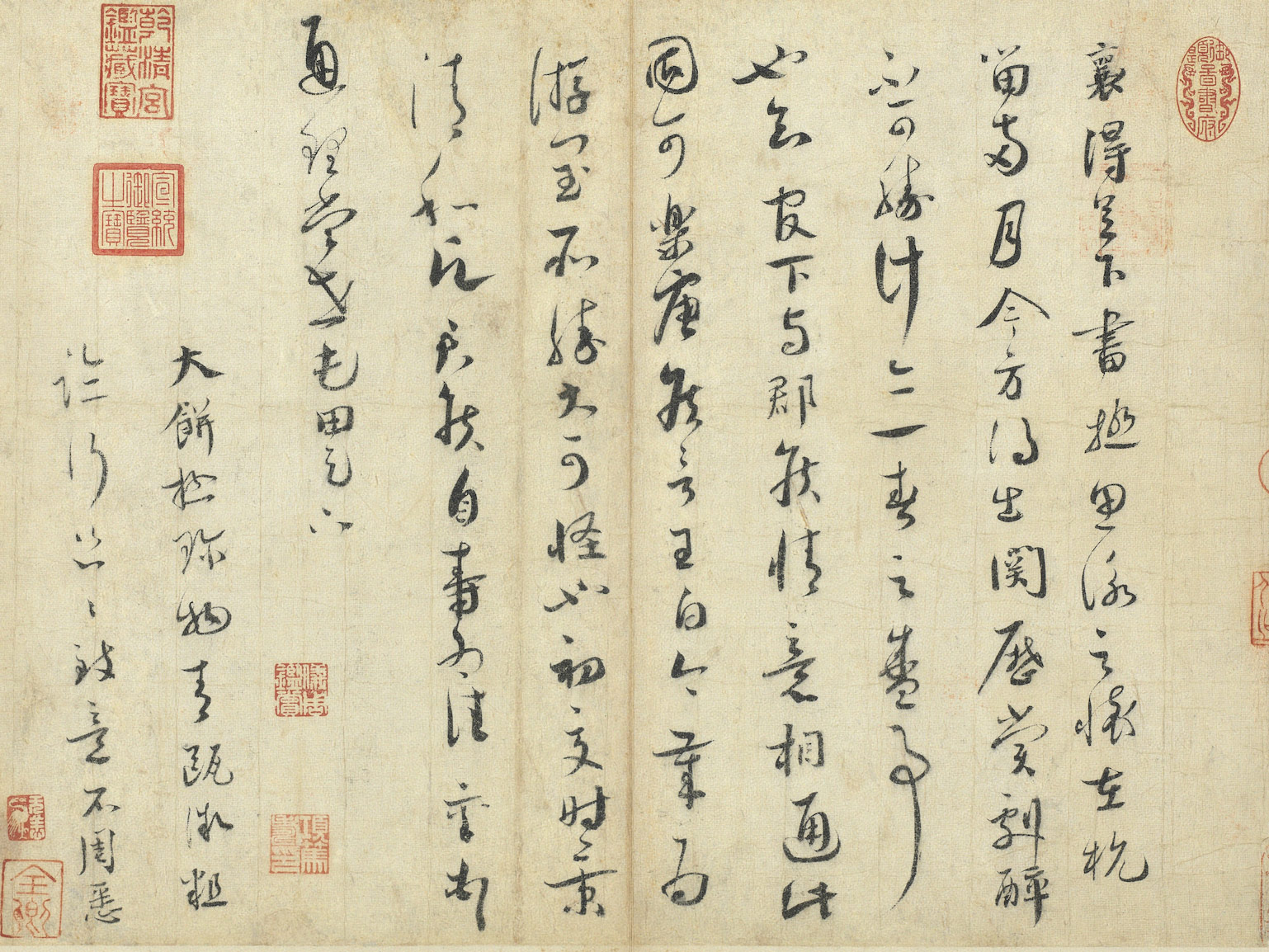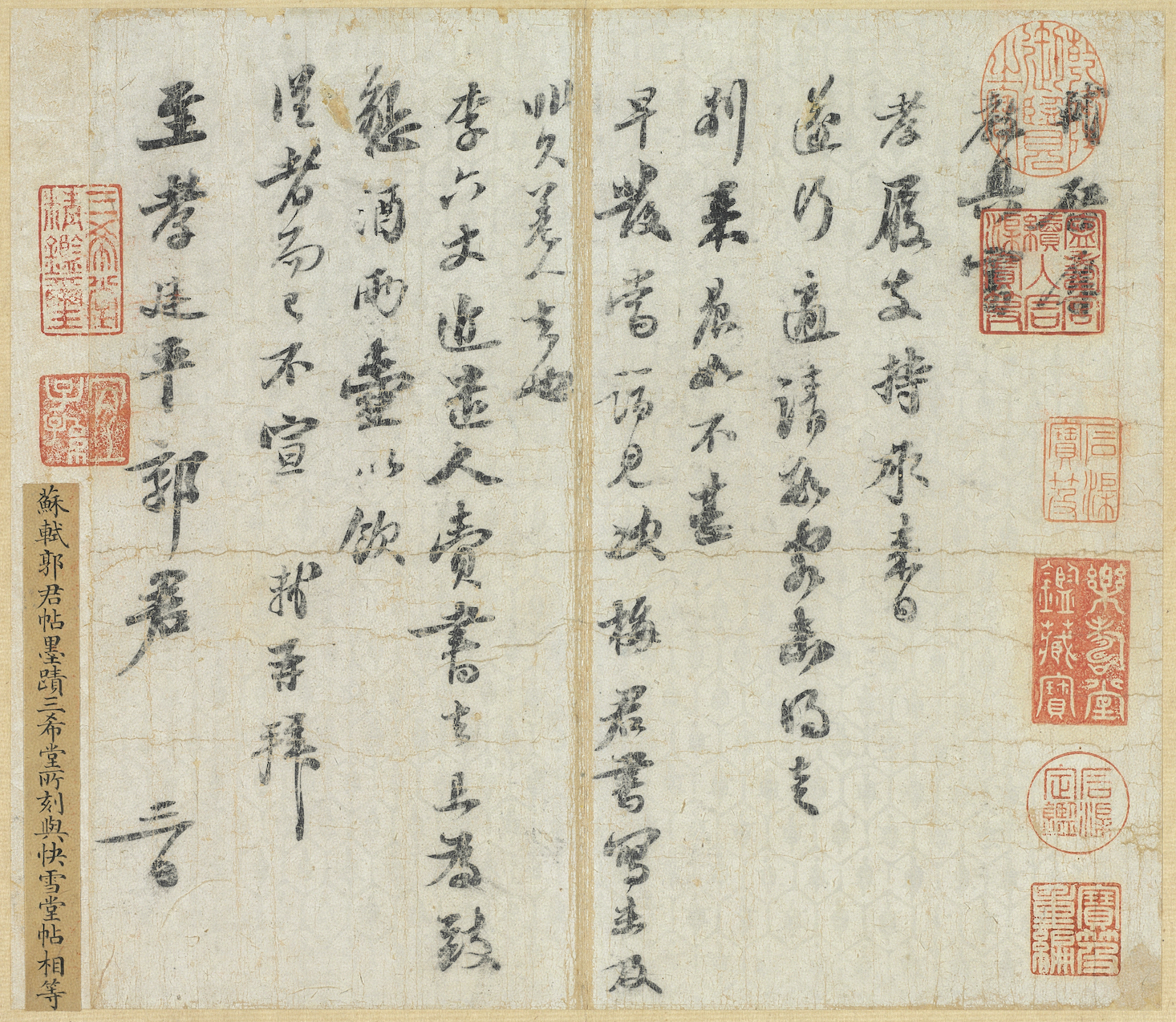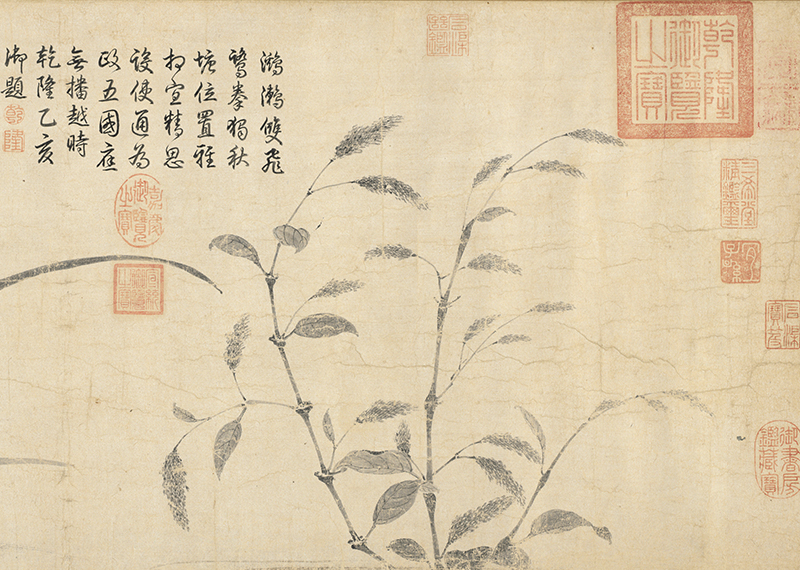"Decorated paper" generally refers to letter paper that has been specially prepared to give it decoration, and the core of this exhibition features works produced in the Song dynasty (960-1279) with impressed designs. The technique for this type of paper involves carving a design into the press, yielding a pattern in low hollow relief after use. Documentary evidence for decorative pressed paper traces the technique back to the Five Dynasties period (907-960), but the earliest examples we have today are from the Northern Song period, with known pieces being quite rare. And the ones often cited are done so repeatedly, leading to a limited impression of the extent of Song dynasty pressed paper. In fact, our current understanding and study of decorative pressed paper involves mostly later works from the Ming and Qing dynasties, a time from which more surviving examples are extant and hence the source behind the saying that this kind of paper only became popular at that time. However, by conducting a careful study and looking carefully, we actually find that among the works of painting and calligraphy in the National Palace Museum are more than twenty precious examples done on Song dynasty decorative pressed paper. With the exception of a few with designs that are more apparent and have attracted scholarly attention, the remainder are mostly unknown. As in the parable of blind men each touching only one part of an elephant, and thus being unable to attain a complete picture, it has been difficult for us to gain a fuller understanding of decorated paper from this period.
This exhibition features twenty select examples of artwork on decorated paper from the Song dynasty, of which many are letters. Except for some decoration that is quite easy to see, many are difficult to discern with the naked eye, leading to previous misidentification as plain paper. But precisely because of the subtle and reserved nature of this decoration, it testifies to the exceptional refinement of Song dynasty ornamental paper. Unfortunately, the methods of production and mounting combined with wear over nearly a thousand years have made these forms of decoration very difficult to distinguish. Only with special photographic techniques is it possible to rediscover many of these designs lost for nearly a millennium. To allow audiences to clearly see these hidden patterns on Song dynasty artworks, the originals are on display along with photographs that aid in bringing out the subdued splendor of letter-writing culture found in decorative pressed paper. Not only exceptional works of fine art in and of themselves, these objects also reveal outstanding achievements in the art of making decorated paper during the Song dynasty.



